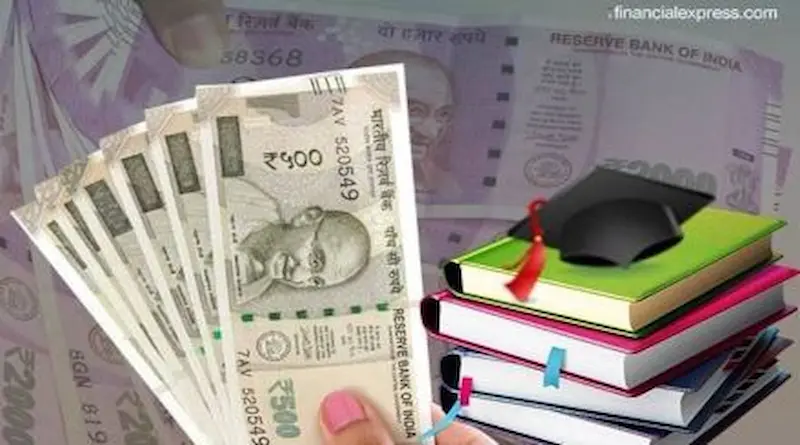Are you dreaming of higher education but worried about tuition fees, living expenses, or studying abroad costs? Don’t stress! Government education loan schemes are designed to help students like you access quality education without being weighed down by financial burdens.
These schemes, backed by the government and partnered with banks, provide loans at affordable interest rates, with flexible repayment plans, and sometimes even interest subsidies. In this guide, we’ll explore everything you need to know about government education loan schemes, step by step, in a simple and user-friendly way.
What Are Government Education Loan Schemes?

Government education loan schemes are financial programs aimed at helping students pay for their education. Unlike private loans, these loans are backed by the government, which ensures lower interest rates, better repayment flexibility, and in some cases, subsidies. They cover various educational needs including tuition fees, hostel expenses, books, study materials, equipment, and even travel expenses for studies abroad.
The main objective is simple: no deserving student should be denied education due to financial limitations.
Key Features of Government Education Loan Schemes
Here’s why government education loans are a smart choice:
- Low Interest Rates
Interest rates are significantly lower compared to private loans. Some schemes even offer interest subsidies for students from economically weaker sections. - Flexible Repayment Options
Most schemes allow repayment to start after the completion of the course, often with a grace period of 6 months to 1 year after graduation. - Collateral-Free Loans
Loans up to a certain amount (commonly ₹7.5 lakh) can be availed without any security or collateral. - Coverage for Education Abroad
Many schemes provide loans for higher studies outside India, covering tuition fees, travel, and living expenses. - Subsidy Benefits
Under certain schemes, the government bears the interest during the moratorium period (the study period plus 6 months), reducing the burden on students.
Popular Government Education Loan Schemes in India

Let’s look at some of the most widely used schemes:
1. Central Sector Scheme of Interest Subsidy (CSIS)
This scheme is for students from economically weaker families with parental income up to ₹4.5 lakh per year. The government provides full interest subsidy during the moratorium period. This means you only repay the principal amount after your course ends.
Key Features:
- Subsidy on interest during study + 6 months
- Available for both Indian and foreign institutions
- Covers professional courses like engineering, medical, management, and more
2. Vidyalakshmi Education Loan Scheme
Vidyalakshmi is an online portal where students can apply for multiple bank loans at once. It helps students compare interest rates, track application status, and access information about various schemes.
Key Features:
- One-stop loan application portal
- Easy comparison of bank offers
- Simplified document submission process
3. Pradhan Mantri Vidya Lakshmi Karyakram (PMVLK)
This scheme ensures that students get easy access to education loans and related government schemes. It works closely with banks and educational institutions to streamline the process.
Key Features:
- Online application and monitoring
- Access to interest subsidy schemes
- Covers multiple banks for loan options
4. State-Specific Education Loan Schemes
Apart from central schemes, many states like Maharashtra, Karnataka, Tamil Nadu, and Kerala provide special education loan programs with additional benefits such as lower interest rates or higher loan limits for state residents.
Eligibility Criteria for Government Education Loans
Eligibility may vary by scheme, but generally, you need to fulfill the following:
- Citizenship: Must be an Indian citizen
- Academic Admission: Must have secured admission in a recognized institution
- Age Limit: Typically below 35 years for regular courses
- Academic Record: Should meet minimum marks or academic requirements
- Income Proof: Required for interest subsidy or merit-based schemes
- Collateral Requirement: Loans up to ₹7.5 lakh usually do not require collateral; higher amounts may
You may also like to read this:
Simple Financial Planning For Beginners: Easy Money Tips
Federal Student Loan Programs Explained Smart Borrowing Tips
Best Private Student Loan Options For College Students
How Student Loan Forgiveness Programs Work Explained
Student Loan Assistance Programs 2025: Complete Guide
Expenses Covered Under Government Education Loans
Government education loans are not limited to tuition fees. They often cover:
- Tuition fees
- Hostel or accommodation expenses
- Books, study materials, and lab equipment
- Travel expenses for studies abroad
- Examination and library fees
- Coaching and training fees (for some professional courses)
How to Apply for a Government Education Loan
Applying for a government education loan is simpler than it seems. Follow these steps:
- Choose the Right Scheme
Research which scheme suits your course, financial situation, and location. - Check Eligibility
Verify your eligibility before applying to save time. - Prepare Required Documents
Commonly required documents include:
- Admission letter from the institution
- Identity proof (Aadhaar, Passport, Voter ID)
- Address proof
- Income certificate of parents/guardian
- Academic records
- Admission letter from the institution
- Submit Application
You can apply online via portals like Vidyalakshmi or directly at participating banks. - Loan Sanction and Disbursement
Once approved, the loan amount is typically transferred directly to your institution in installments.
Tips to Make the Most of Education Loan Schemes
- Compare Interest Rates: Even among government-backed banks, rates may vary. Check before finalizing.
- Track Repayment Timeline: Know when the moratorium period ends and plan repayment early.
- Keep Documents Ready: Ensure all certificates, income proofs, and academic records are complete to avoid delays.
- Stay Informed About Subsidies: Some schemes provide interest subsidies—ensure you meet eligibility criteria.
- Consider Loan Insurance: Some banks offer insurance for education loans, protecting your family in case of emergencies.
FAQs About Government Education Loan Schemes
Q1: Can I get a government education loan for studying abroad?
Yes! Many schemes cover higher studies abroad, including tuition, living expenses, and travel.
Q2: What is the maximum loan amount under government schemes?
Collateral-free loans generally go up to ₹7.5 lakh; loans with collateral can go up to ₹1 crore for studying abroad.
Q3: Is there any interest subsidy?
Yes, schemes like CSIS provide full interest subsidy during the moratorium period for eligible students.
Q4: Can I repay the loan early?
Most banks allow prepayment without penalties, but always check specific bank terms.
Q5: How long does it take to get a government education loan approved?
Usually 2–4 weeks, depending on document verification and bank processing times.
Conclusion
Government education loan schemes are an excellent tool for students who aspire to higher education without financial stress. By choosing the right scheme, understanding eligibility, and planning repayments carefully, you can focus on your studies while the loan helps cover your educational costs.
These schemes are more than just financial support—they’re a step toward achieving your academic and career dreams with confidence.




